Wolfram Function Repository
Instant-use add-on functions for the Wolfram Language
Function Repository Resource:
A graph representing cycles and fixed points of a permutation
ResourceFunction["PermutationCyclesGraph"][perm] constructs a graph of disjoint cycles representing the permutation perm. |
Permutation cycles represented as a graph:
| In[1]:= | |
| In[2]:= | |
| Out[2]= | 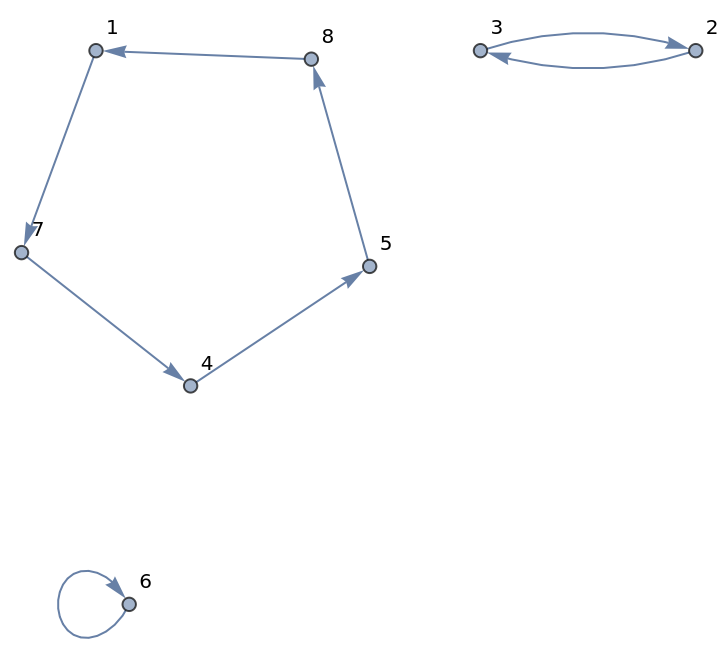 |
Or as a list:
| In[3]:= | |
| Out[3]= | |
Cycles graph of a permutation list:
| In[4]:= | |
| Out[4]= | 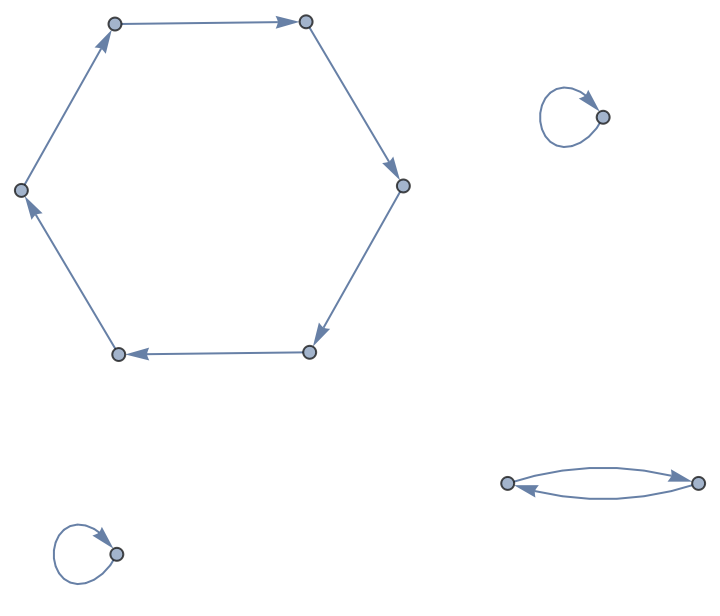 |
Permutation represented as Cycles:
| In[5]:= | |
| Out[5]= | |
| In[6]:= | |
| Out[6]= | 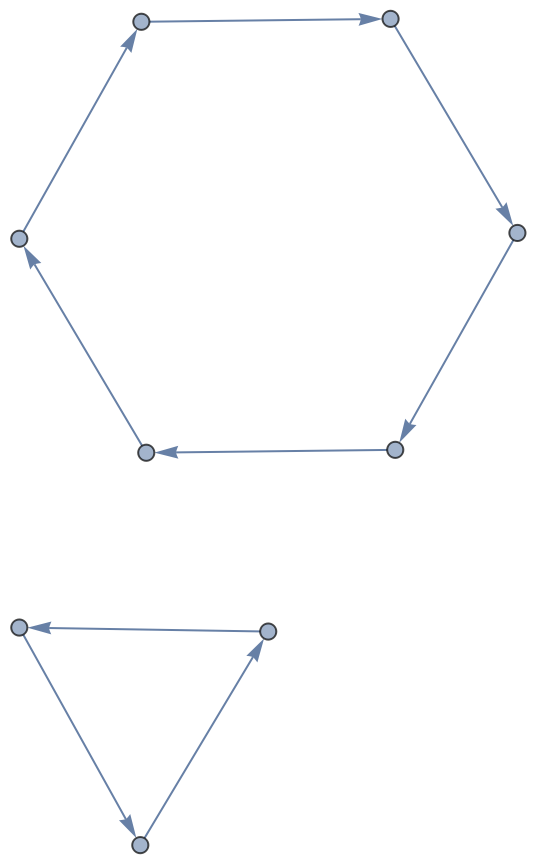 |
Permutation cycles graph can also be constructed, possibly less efficiently, by finding the ordering of a permutation:
| In[7]:= | |
| In[8]:= | |
| Out[8]= | 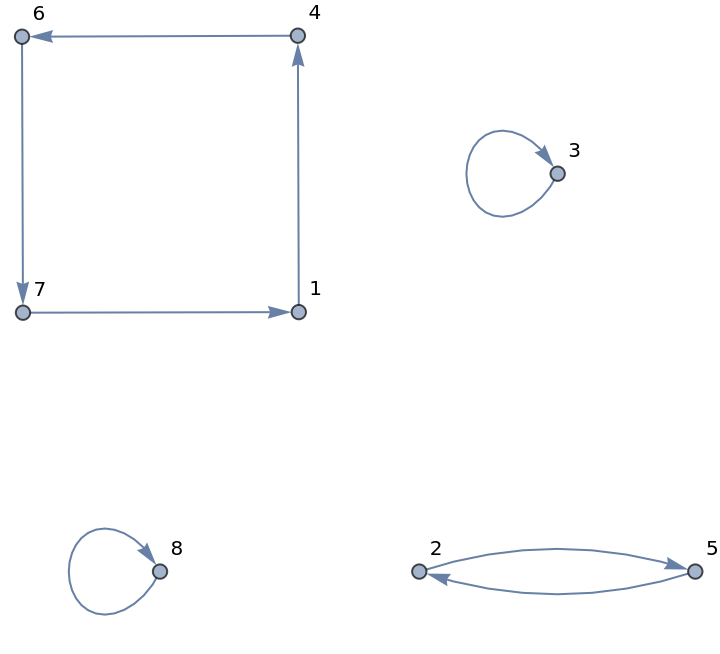 |
| In[9]:= | |
| Out[9]= | 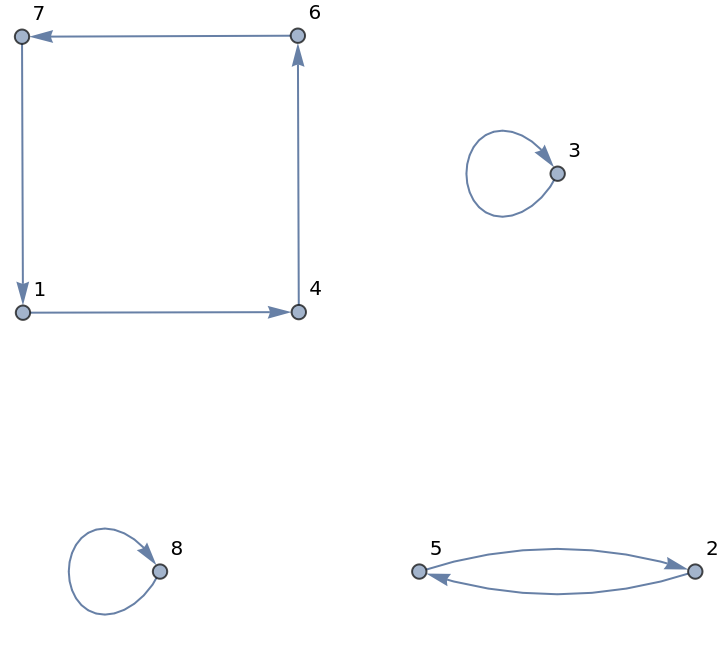 |
PermutationCyclesGraph of a permutation represented as cycles does not include fixed points; neither does the Cycles representation:
| In[10]:= | |
| Out[10]= | |
| In[11]:= | |
| Out[11]= | 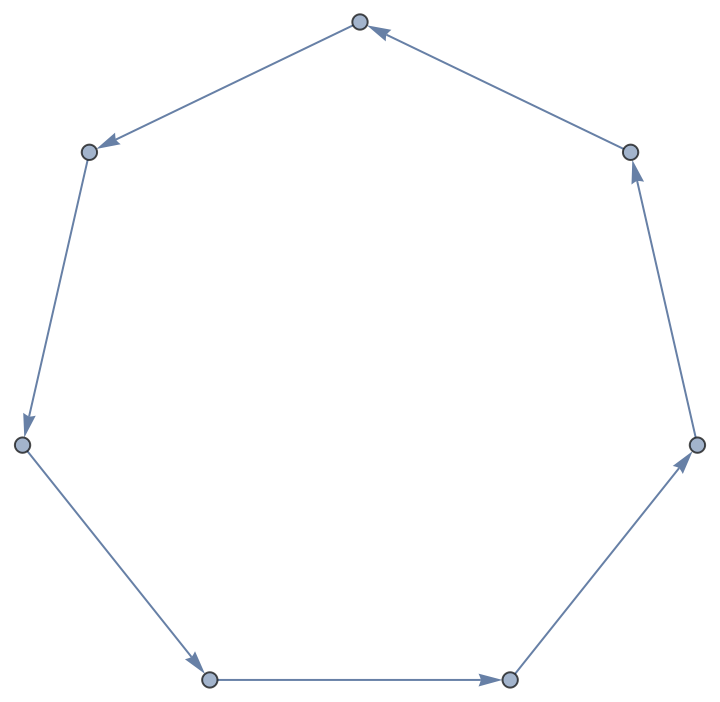 |
Construct a permutation list to include fixed points:
| In[12]:= | |
| Out[12]= | |
| In[13]:= | |
| Out[13]= | 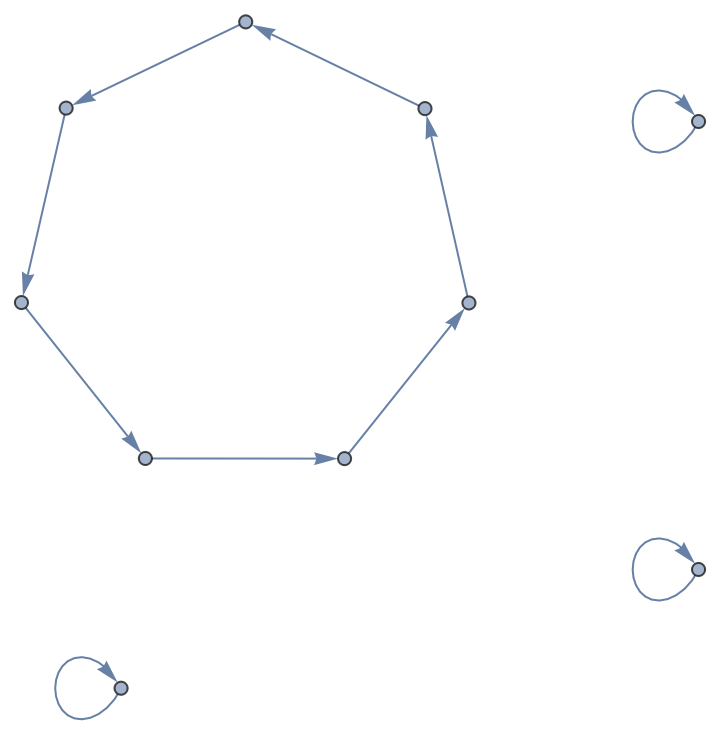 |
Alternatively, use an arbitrary head, rather than Cycles, when computing permutation cycles:
| In[14]:= | |
| Out[14]= | |
| In[15]:= | |
| Out[15]= | 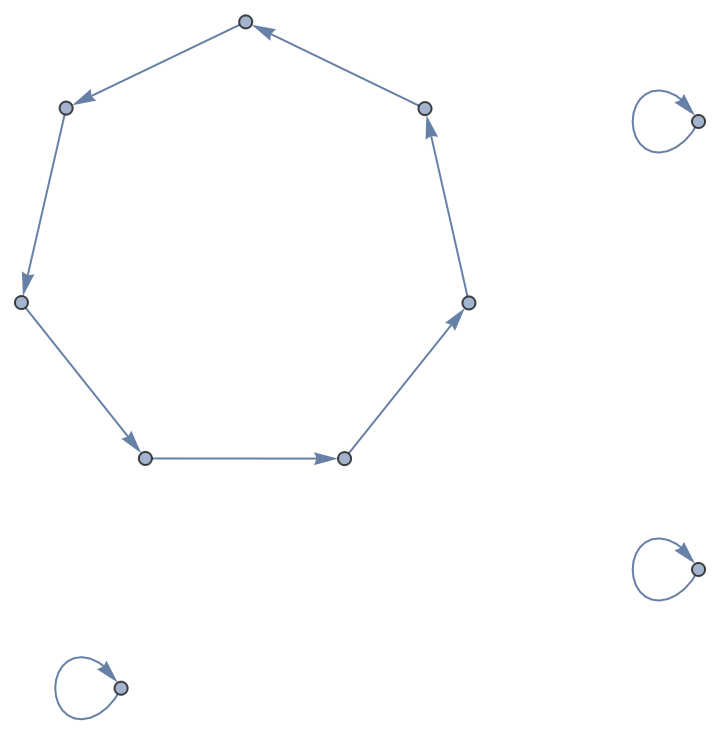 |
This work is licensed under a Creative Commons Attribution 4.0 International License